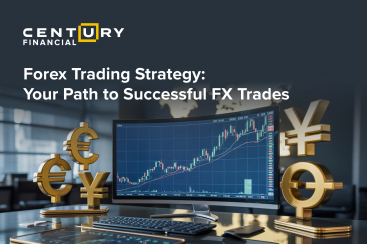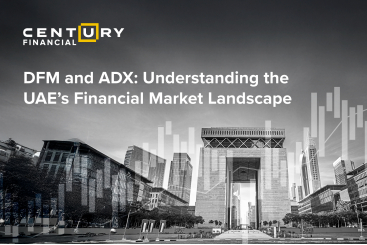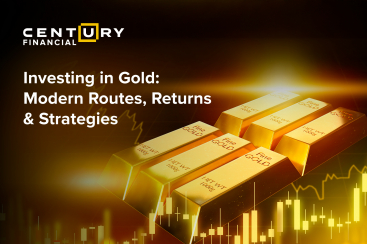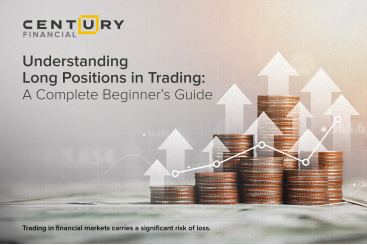Wednesday, June 22, 2022
Volatility trading: How do traders harness volatility?
تم إعداد هذا المنشور من قبل سنشري للاستشارات


Interest rates near zero and a low inflation environment in 2021 had provided a conducive environment for the global markets to thrive.
The global economy was reopening on a gradual recovery mode post COVID-19 induced crisis driven by rapid vaccination drive.
However, things took an ugly turn with Russia launching a military attack on Ukraine on Feb 24, 2022.
Current macroeconomic scenario induced volatility
Oil and food crisis fears saw commodity prices hit highs. Surging energy and food prices bolstered inflation creating pressure on central banks to hike interest rates. This, in turn, reduces purchasing power further.
Investors’ risk sentiments took a good beating. As witnessed, risky assets went for a toss, for instance; crypto markets wiped nearly $1 trillion from its total market capitalization.
Gold stood true to its safe-haven stature.
However, high oil prices, grocery inflation, and CPI at record highs, coupled with the shrinking of the economy in Q1 have stoked stagflation and recession fears.
All these factors have induced volatility across global market instruments. Let us dig in deep to make sense of volatility and how traders use indicators to harness the market volatility.
Volatility trading overview
One of the most volatile securities are commodities, including energy market instruments including oil and gas; followed by metals including gold, silver, palladium, agriculture products including sugar, cotton, wheat; to name a few.
Typically, commodity markets are greatly influenced by supply and demand conditions, wherein any change induces volatility in price of the concerned commodity. Stocks with commodity exposure are seen to mirror the fluctuations across underlying commodity.
Also, tech sector is known for its dynamism across the global markets. This is the reason why the tech-laden NASDAQ 100 index is highly watched by the retail traders.
In this article, we take a broader view at what volatility trading is and how to harness the trading opportunities it creates across the global markets.
What is volatility?
Volatility refers to the variance in price of a security with time. In other words, the speed, or the degree of change in price (in either direction) is known as volatility.
The idea is to assess how much the price of the security fluctuates or how much scattered it is compared to the moving average over time. The more the price movement, the higher is the volatility.
In trading, it is considered a key metric as volatility is considered profit potential. However, trader may incur losses in case he is not aware of the appropriate strategies and information.
The more the movement in the price of the security, the higher is the degree of volatility. The price movement can be in either direction: up or down.
What is volatility trading?
Volatility trading involves taking a view on the future stability of a security’s value. The traders so not merely trade the rising or falling prices, instead they predict whether the security will see movement – in any direction.
Volatility trading comes mainstream when macroeconomic events trigger global market instruments to move erratically.
Currently, FOMC meeting minutes, comments from Fed officials, consumer price index numbers across nations, employment numbers are all being watched by investors keenly. In case, any mandate release is not in sync with expectations, markets react to price in the fresh sentiments.
So, volatility trading helps you to take a position – and to place the order according to your forecast and perception.
How to harness volatility in trading?
What are the most common volatility trading strategies?
Traders use various strategies and indicators to explore the profit potential and harness the volatility.
In a bid to trade volatility, the first step is to identify volatile assets, and track the volatility. This can be done by incorporating volatility-based technical indicators.
Volatility is a keenly watched metric by all traders, including short-term and swing traders, who primarily focus on daily and weekly price movements.
Volatility indicators help in analysing the periods of high and low volatility in an asset class. The large swings triggered by the volatility can provide the traders with good trading opportunities.
We discuss commonly used volatility indicators that help the traders to know when the volatility is high or low in a security.
Traders leverage different indicators to track volatility and to calculate optimal exit or entry points. Although, many view high volatility as a deterrent for a risky trade, increased fear during extreme moves can also generate buying opportunities, thereby providing considerable trading ground for experienced investors.
Volatility Index(VIX), Average True Range(ATR), and Bollinger Bands, are most used by traders to assess the next move amid volatility.
Cboe Volatility Index
Cboe Volatility Index known by ticker symbol VIX and often referred as the fear index, reflects the current implied or expected volatility priced into a strip of short-term S&P 500 Index options.
Large institutes account for significant portion of trading in S&P Index options. Thereby, their volatility perceptions (as calculated by VIX) are used by other traders to help make some sense of likely market volatility in the days ahead.
The Cboe Volatility Index usually stays between 12 and 35, but there have been instances wherein VIX dropped into the single digits or rallied to more than 75. As a threshold, VIX values higher than 30 indicate heightened volatility, meanwhile values in the low teens show low volatility.
In times of higher VIX returns, market participants tend to pursue investment strategies with low risk.
Average True Range
The average true range (ATR) is a popular charting tool indicator used for technical analysis to know the degree of market volatility. It is calculated from the 14-day simple moving average (SMA) of a series of true range indicators.
ATR can be applied to all types of securities as it analyses a range of asset prices within a predetermined time period, considering any gaps in price action.
In a bid to generate more or fewer trading signals, traders can use shorter or longer periods than 14 days, respectively.
ATR is used to get an idea about a security’s daily trading ranges over time, wherein high reading indicates larger trading ranges and therefore increased volatility. Meanwhile, low readings from the ATR are typically consistent with quiet or uneventful time period.
Bollinger Bands
Bollinger bands capture an important aspect of volatility by identifying upper and lower levels as bands generated on a real-time basis backed by recent price movement in the asset class.
Typically, the values followed are 12 for simple moving average (SMA) and two for standard deviation for top and bottom bands. Contraction and expansion of dynamic bands indicate reversal signals which help traders in taking appropriate positions in binary options.
Overbought situations are signalled if the current market price is above the top band. While overselling is signalled if the current market price is lower than the lower band.
Risk protection in volatile markets
If there wouldn’t be price changes, there wouldn’t be room for trading opportunities. However, it so happens sometimes that prices move more rapidly compared with other times.
Hence, price swings create more scope to harness the volatility. Nevertheless, the trade-off is that higher volatility also implies increased risk.
On the one hand, high volatility could help a trade make above-average profits. Meanwhile, on the other hand, the trader stands at risk of losing sizable capital over a comparatively shorter period.
This is where risk control measures including stop losses come mainstream when markets are more volatile.
With a disciplined approach, a trader may be able to take advantage of volatility—while minimizing risks.
In volatile times, it may be worth it to closely watch any move and change tactics accordingly. However, it may not be appropriate to try it in the heat of the moment. For volatility trading, it is best to be prepared for consequences, in advance.
Note that, if a trader is not sure where the markets are heading, simply waiting and watching is not a bad idea, too!
Intrigued to know more on volatility, call us now!
لا تقدم شركة سنشري للإستشارات والتحليل المالي ش.ذ.م.م (الشركة) محتوى هذه المدونة، بما في ذلك أي أبحاث أو تحليلات أو آراء أو توقعات أو أي معلومات أخرى (يُشار إليها مجتمعةً باسم "المعلومات")، إلا لأغراض التسويق والتثقيف وإتاحة المعلومات العامة. ولا يُفسَّر ذلك على أنه نصيحة استثمارية أو توصية أو دعوة لشراء أو بيع أي أدوات مالية.
كما يجوز نشر هذه المعلومات عبر قنوات مختلفة، بما في ذلك موقع الشركة الإلكتروني، ومنصات الغير، والنشرات الإخبارية، والمواد التسويقية، ورسائل البريد الإلكتروني، ووسائل التواصل الاجتماعي، وتطبيقات المراسلة، والندوات الإلكترونية، وغيرها من وسائل التواصل. وبينما تسعى الشركة لضمان دقة المحتوى، فإنها لا تضمن اكتماله أو موثوقيته أو تحديثه في الوقت المناسب. وعليه، فأي قرارات تُتخذ بناءً على هذه المعلومات تكون على مسؤوليتك الشخصية. ولا تتحمل الشركة أي مسؤولية عن أي خسارة أو ضرر ناتج عن استخدامها.
ينطوي تداول المنتجات المالية على مخاطر كبيرة، بما لا يتناسب مع جميع المستثمرين. فيُرجى التأكد من وعيك التام بالمخاطر، وطلب الاستشارة المهنية المتخصصة إذا لزم الأمر.
يُرجى الاطلاع على بيان كشف المخاطر الشامل المتوفر على موقعنا الإلكتروني.
















